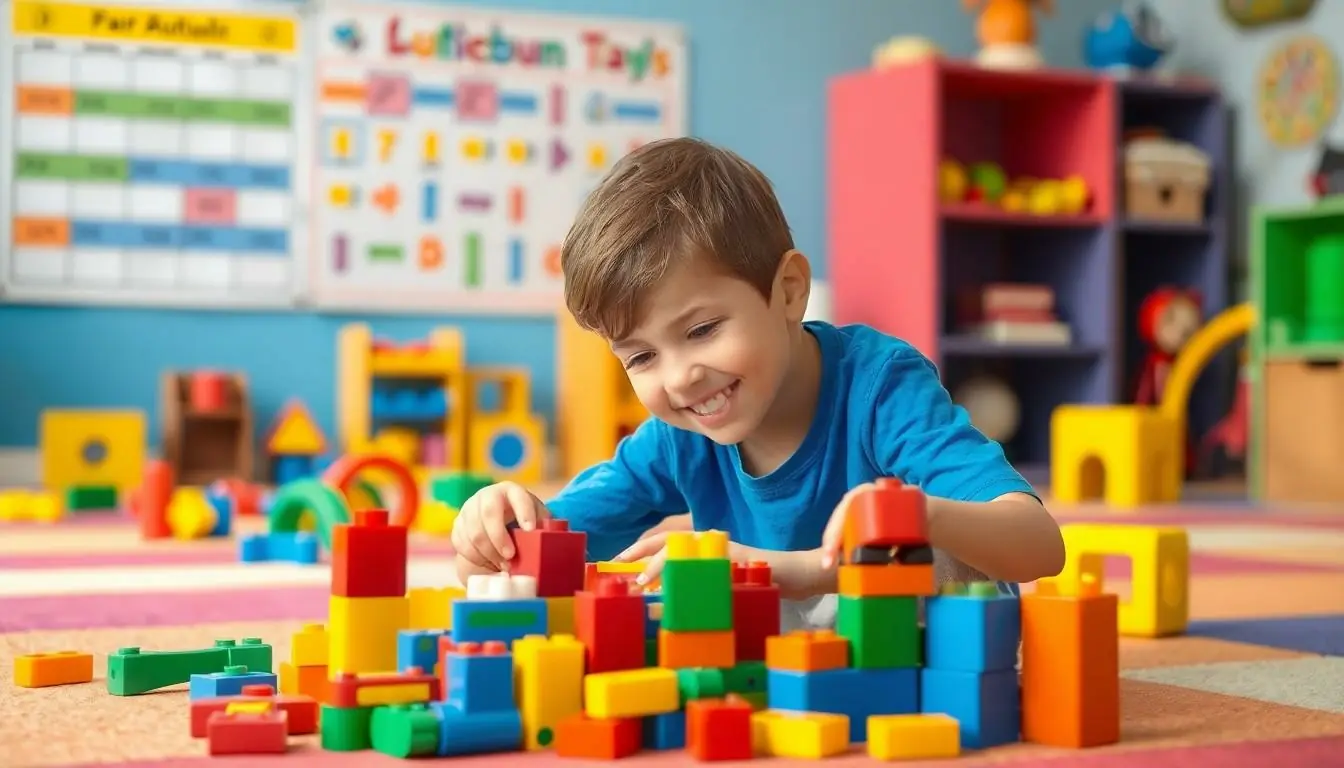Parenting a child with autism presents unique challenges, especially when it comes to discipline. Traditional disciplinary methods often fall short because children with autism process information and respond to situations differently than neurotypical children.
Understanding how to effectively discipline an autistic child requires patience, creativity and consistency. While there’s no one-size-fits-all approach, parents can learn specific strategies that work with their child’s unique needs and behaviors. From setting clear routines to using visual aids and positive reinforcement, the right disciplinary techniques can help create a supportive environment where autistic children can thrive and learn appropriate behaviors.
Table of Contents
ToggleUnderstanding Autism and Behavioral Challenges
Autism affects how children perceive their environment process information. This neurological difference creates unique behavioral patterns that require specific approaches to discipline management.
Common Behavioral Issues in Autistic Children
Autistic children display distinct behavioral patterns that stem from sensory processing differences. Common behaviors include:
- Repetitive Movements: Rocking hand-flapping or spinning objects
- Sensory Overload Reactions: Covering ears screaming or running away in response to loud noises bright lights or strong smells
- Communication Frustration: Tantrums or aggression when unable to express needs or wants
- Rigid Routines: Extreme distress when daily patterns are disrupted
- Social Challenges: Difficulty reading social cues responding to others or maintaining eye contact
- Self-Stimulatory Behavior: Engaging in repeated actions like humming tapping or object fixation
Why Traditional Discipline Methods May Not Work
- Sensory Processing: Autistic children experience sensory input differently making time-outs or raised voices overwhelming
- Communication Barriers: Abstract concepts like “be good” lack meaning without concrete visual supports
- Executive Function: Difficulty connecting actions with consequences affects behavior modification
- Social Understanding: Limited grasp of social expectations makes traditional rewards systems less effective
- Anxiety Response: Punitive measures increase anxiety leading to more challenging behaviors
- Processing Time: Quick verbal corrections fail to allow adequate time for information processing
Creating a Supportive Environment
A supportive environment creates stability for autistic children through structured spaces routines. The following strategies help establish predictability while minimizing potential triggers that lead to behavioral challenges.
Establishing Clear Routines
Clear routines provide autistic children with a sense of security through predictable daily activities. Morning routines include specific steps like brushing teeth waking up at the same time getting dressed eating breakfast. Afternoon schedules incorporate dedicated homework time planned activities structured play periods. Evening routines feature consistent dinner times bath times bedtime preparations. Each transition point comes with verbal cues visual reminders allowing 5-10 minutes between activities. Breaking down complex tasks into manageable steps helps children understand expectations complete activities independently. Fixed routines reduce anxiety by creating order structure throughout the day.
Setting Up Visual Schedules
Visual schedules transform abstract time concepts into concrete visual representations for autistic children. Picture cards show daily activities in sequential order using photographs symbols or drawings. A wall-mounted schedule board displays 4-6 activities at once with removable velcro-backed cards. Digital apps offer customizable visual schedules with timing alerts progress tracking features. Color coding helps distinguish different types of activities – red for essential tasks blue for fun activities green for outdoor time. Visual timers complement schedules by showing remaining time for specific tasks through sand timers countdown displays or time-tracking apps. These visual supports enhance independence reduce anxiety about transitions increase compliance with daily routines.
Positive Reinforcement Strategies
Positive reinforcement encourages desired behaviors in autistic children through rewards, praise, and consistent acknowledgment. These strategies create a supportive learning environment that motivates children to repeat positive actions.
Using Reward Systems
Token economies provide structured rewards for autistic children who demonstrate target behaviors. A child earns tokens, stickers, or points for completing tasks like following instructions, sharing toys, or using appropriate communication methods. These tokens accumulate toward meaningful rewards such as:
- Extra screen time (10-15 minutes)
- Special activities (playing favorite games, art projects)
- Sensory items (fidget toys, stress balls)
- Choice time (selecting preferred activities)
- Small prizes (stickers, collectibles)
The reward system includes a clear visual chart displaying:
- Target behaviors
- Required tokens for each reward
- Daily progress tracking
- Achievement celebrations
Praising Good Behavior
Specific praise helps autistic children understand exactly which behaviors earn positive attention. Effective praise includes:
- Direct statements: “You waited quietly for your turn”
- Immediate feedback: Acknowledging positive actions within 5 seconds
- Nonverbal recognition: High fives, thumbs up, gentle pats
- Descriptive comments: “You picked up all your toys from the floor”
- Consistent responses: Using similar phrases for repeated behaviors
- Happy face cards
- Achievement charts
- Photo sequences
- Digital reward apps
- Progress calendars
Managing Meltdowns and Sensory Issues
Meltdowns occur when autistic children experience overwhelming sensory input or emotional distress. Understanding triggers and implementing effective de-escalation strategies helps create a calmer environment for autistic children.
Identifying Triggers
Environmental triggers affect autistic children’s behavior in specific ways:
- Sensory Overload: Bright lights fluorescent bulbs or intense sounds from crowd noise
- Change in Routine: Unexpected schedule alterations or disrupted daily patterns
- Physical Discomfort: Tags in clothing tight shoes or uncomfortable room temperature
- Social Pressure: Group activities forced eye contact or complex social interactions
- Communication Barriers: Difficulty expressing needs or understanding instructions
Parents track triggers by:
- Recording meltdown incidents in a behavior log
- Noting time location and activities before episodes
- Documenting physical signs like covering ears or rocking
- Monitoring environmental factors such as noise or light levels
- Observing changes in routine or transitions
De-escalation Techniques
Effective calming strategies include:
- Safe Space Creation: Designate quiet areas with minimal sensory input like dim lighting soft textures
- Deep Pressure: Apply weighted blankets compression vests or gentle squeezes
- Sensory Tools: Offer noise-canceling headphones fidget toys or stress balls
- Simplified Communication: Use short clear phrases or visual cues during distress
- Movement Options: Allow physical activities like jumping swinging or pacing
- Maintain a calm quiet voice
- Remove environmental triggers immediately
- Give space when needed
- Avoid physical contact unless requested
- Present calming activities familiar to the child
Teaching Self-Regulation Skills
Self-regulation skills enable autistic children to manage their emotions, behaviors, and responses to environmental stimuli. Teaching these essential skills requires consistent practice, appropriate tools, and individualized strategies that match each child’s unique needs.
Calming Techniques
Deep breathing exercises help autistic children regulate their emotional state during moments of stress. Counting breaths while inhaling for 4 counts and exhaling for 4 counts creates a rhythmic pattern that promotes relaxation. Progressive muscle relaxation involves tensing and releasing different muscle groups, starting from the toes up to the head. Heavy work activities like pushing, pulling or carrying weighted objects provide proprioceptive input that calms the nervous system. Fidget tools such as stress balls, putty or textured objects offer tactile stimulation to maintain focus and reduce anxiety. Quiet spaces equipped with soft lighting, comfortable seating and minimal distractions serve as safe zones for emotional regulation.
Emotional Recognition Tools
Picture cards displaying various facial expressions help autistic children identify and understand different emotions. Emotion thermometers use color gradients to represent intensity levels of feelings, from calm green to angry red. Social stories with clear illustrations demonstrate appropriate responses to emotional situations. Mirror exercises encourage children to observe and practice facial expressions while learning emotional vocabulary. Digital apps featuring interactive emotion recognition games provide engaging practice opportunities. Body mapping activities teach children to recognize physical sensations associated with different emotions: butterflies in stomach for anxiety or tight shoulders for stress. Emotion journals with simple writing prompts or drawing spaces allow children to track and express their feelings throughout the day.
Working With Professionals
Professional support enhances the effectiveness of disciplinary strategies for autistic children through specialized expertise and evidence-based interventions.
Behavior Therapists
Behavior therapists specialize in Applied Behavior Analysis (ABA) techniques to address challenging behaviors in autistic children. These specialists conduct functional behavior assessments to identify triggers causing specific behaviors in different environments. ABA therapy creates individualized intervention plans focusing on positive reinforcement strategies tailored to each child’s needs. The therapist works directly with the child while training parents in proven behavior management techniques.
| ABA Therapy Components | Typical Duration |
|---|---|
| Initial Assessment | 2-4 weeks |
| Parent Training | 8-12 sessions |
| Direct Therapy | 20-40 hours/week |
| Progress Review | Every 3-6 months |
Special Education Support
Special education teachers provide structured learning environments with specialized support for autistic students. These educators implement Individualized Education Programs (IEPs) incorporating behavioral goals alongside academic objectives. The classroom setting offers:
- Visual schedules displaying daily activities
- Sensory breaks integrated throughout lessons
- Social skills training during peer interactions
- Modified teaching methods matching learning styles
- Behavioral intervention strategies during transitions
Teachers collaborate with parents to maintain consistent disciplinary approaches between home and school environments through regular progress updates and strategy sharing sessions.
Conclusion
Disciplining an autistic child requires a thoughtful and individualized approach that considers their unique needs and challenges. Parents and caregivers who combine structured routines visual aids and positive reinforcement create an environment where their child can thrive and learn appropriate behaviors.
Success lies in understanding triggers implementing effective de-escalation techniques and teaching valuable self-regulation skills. With professional support from behavior therapists and special education teachers families can develop comprehensive strategies that work both at home and school.
Remember that progress takes time and patience. By staying consistent with these evidence-based approaches parents can help their autistic child develop essential life skills while maintaining a supportive and nurturing environment.




